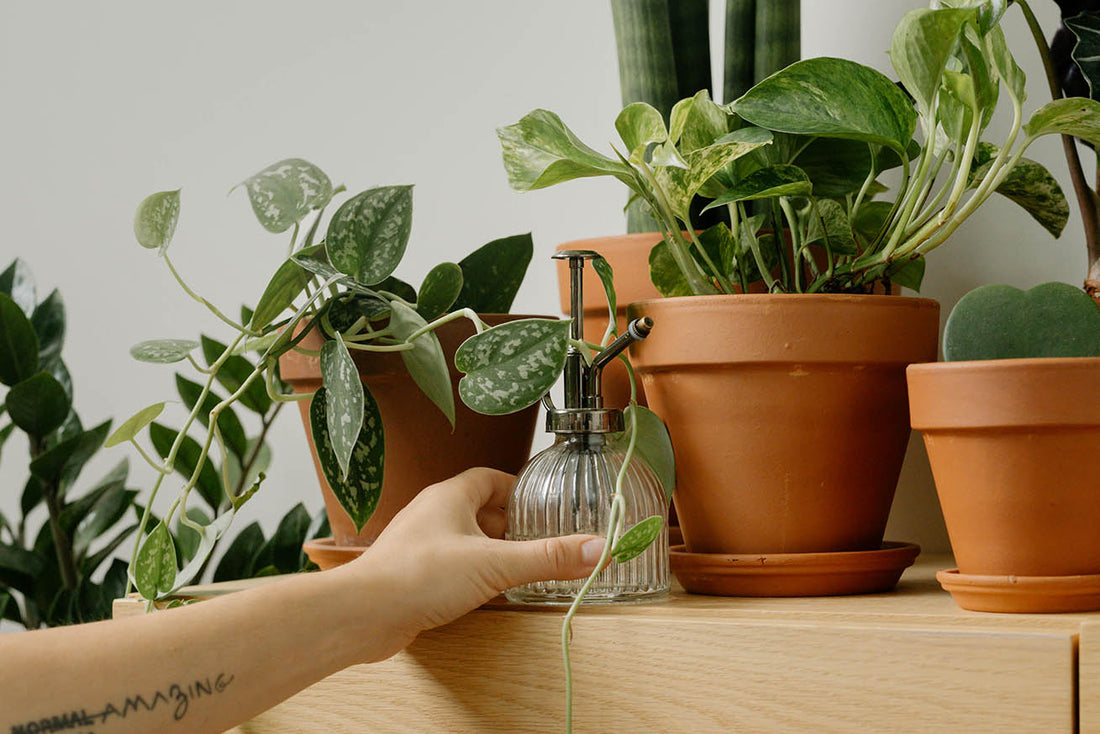Creating your own closed terrarium is a fun and satisfying way to bring a little slice of nature into your home. But let’s be real—things don’t always go perfectly on the first try. Maybe your moss turns brown, or you spot mold creeping in (ugh). Don’t worry, though. At Terrarium Kit, we’re here to help you avoid common pitfalls and create a thriving mini-ecosystem that you can be proud of.
Here’s a quick guide to the most common mistakes people make when building a DIY closed terrarium—and how to avoid them.
1. Skipping the Drainage Layer
A drainage layer is like the unsung hero of your terrarium. Without it, water has nowhere to go, and your plants could end up swimming (not in a good way).
How to Fix It:
- Add a base layer of small stones or gravel.
- Sprinkle a layer of activated charcoal on top to keep things fresh and prevent any funky smells.
2. Picking the Wrong Plants
Not all plants are built for life inside a closed terrarium. Some need lots of air circulation or direct sunlight, which just isn’t going to work in a sealed environment. Need help picking plants? Check out our article here.
The Winners:
- Ferns
- Moss (a terrarium classic)
- Fittonia (nerve plants)
- Miniature tropical plants like peperomia
The Losers:
- Cacti or succulents—they’ll hate the humidity and probably rot.
3. Overwatering
Too much water is one of the fastest ways to kill a terrarium. You’ll know it’s happening if you see pools of water at the bottom or if your plants look sad and yellow.
How to Avoid It:
- Go easy with the watering can. In fact, consider using a spray bottle for more control.
- Keep an eye on condensation. A little fog is normal, but if water’s dripping down the glass like a steamy shower, it’s time to ventilate or cut back on watering.
Want to know more about keeping water levels just right? Check out our blog post on why distilled water is the best choice for terrariums.
4. Direct Sunlight Disaster
Putting your terrarium in direct sunlight is like turning it into a plant sauna. Most terrarium plants just can’t handle that kind of heat.
Better Option:
- Place your terrarium in bright, indirect light. Think near a window, but not in the sun’s full blast.
- Artificial lights, like grow lights, are also a great choice.
5. Poor Ventilation
Yes, a closed terrarium is supposed to be sealed, but it still needs a little fresh air now and then. Too much moisture can lead to mold, and nobody wants that.
Easy Fix:
- Pop the lid off for an hour or two every couple of weeks to let your terrarium breathe.
- Regularly check for any fuzzy white mold and remove it immediately.
6. Using the Wrong Soil
Terrariums need soil that drains well but still holds some moisture. Regular garden soil won’t cut it—it’s too dense and can bring in pests.
Pro Tip:
- Use a sterile, high-quality potting mix, or grab our Enclosed Terrarium Kit, which includes terrarium-ready soil.
7. Overloading the Terrarium
It’s tempting to stuff your terrarium with all the plants, rocks, and knick-knacks you can find, but too much can crowd your plants and mess with air circulation.
Keep It Simple:
- Use 2–3 plants and a few decorative items.
- Make sure there’s space for your plants to grow and breathe.
8. Forgetting Regular Maintenance
Terrariums are low-maintenance, but they’re not maintenance-free. Neglect can lead to overgrowth, mold, or sad, dying plants.
Maintenance Checklist:
- Trim plants as they grow.
- Remove any yellowing leaves or signs of mold.
- Adjust watering and ventilation as needed.
Ready to Build Your Dream Terrarium?
Building a DIY closed terrarium doesn’t have to be intimidating, especially when you have the right tools and guidance. If you’re just starting out, our Enclosed Terrarium Kit makes it easy to avoid these common mistakes. It’s got everything you need to create a thriving miniature garden, and it’s perfect for beginners and pros alike.
FAQs
1. Can I use tap water in my terrarium?
We recommend using distilled water to avoid mineral buildup and keep your terrarium clean.
2. How often should I water a closed terrarium?
Usually, once every few weeks is enough. Watch for signs like dryness or excessive condensation to guide you.
3. What’s the best container for a closed terrarium?
A clear glass container with a tight-fitting lid works best. Bonus points if it’s big enough to let plants grow comfortably!
4. Can I use my own soil instead of buying a kit?
Sure, but make sure it’s a sterile potting mix. Regular garden soil could introduce pests or fungi.
5. How do I get rid of mold in my terrarium?
If mold appears, remove it immediately with a damp cloth or tweezers. Then, let the terrarium air out for a few hours.
By avoiding these common mistakes, you’ll have a healthy, thriving terrarium that adds beauty and greenery to your space. Happy terrarium-making!




